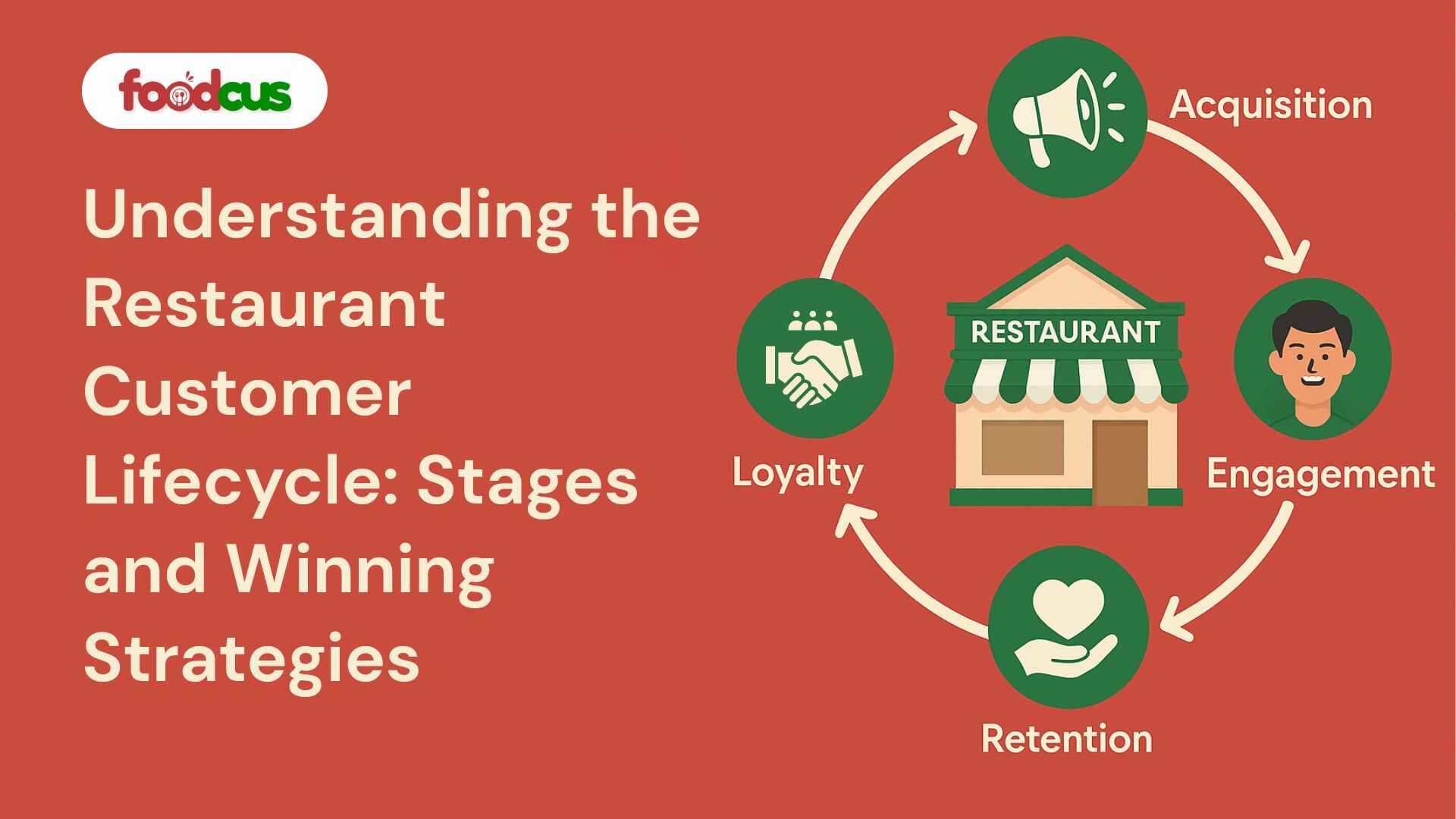
Running a restaurant isn’t just about great food—it’s about building relationships. And like any relationship, customer loyalty doesn’t happen overnight. It evolves through stages, from the first bite to long-term loyalty. That’s where understanding the Restaurant Customer Lifecycle becomes essential.
In this blog, we’ll break down the key stages of the customer journey and outline proven strategies to attract, engage, and retain diners at each step.
What is the Restaurant Customer Lifecycle?
The customer lifecycle refers to the journey a diner goes through—from discovering your restaurant to becoming a repeat customer and even a brand advocate. By aligning your strategies with each stage, you can drive higher footfall, improve guest satisfaction, and increase lifetime value.
The 6 Stages of the Restaurant Customer Lifecycle

1. Awareness
“I just heard about this place!”
What happens here:
This is the first touchpoint—when a potential diner discovers your restaurant via social media, Google search, ads, online reviews, or word of mouth.
Strategies:
- Optimize your Google Business Profile with updated hours, photos, and menus.
- Encourage happy guests to leave reviews on Google, Yelp, or TripAdvisor.
- Stay active on Instagram, TikTok, or Facebook with eye-catching food photos and local hashtags.
- Run geo-targeted ads and collaborate with local influencers or food bloggers.
2. Consideration
“Should I give this place a try?”
What happens here:
Now that the customer knows about you, they’re evaluating whether to visit. They may browse your website, read reviews, or compare your offerings with others.
Strategies:
- Ensure your menu is mobile-friendly and updated online.
- Showcase customer testimonials and behind-the-scenes content.
- Offer first-time visit discounts or online ordering perks.
- Highlight your USP—unique dishes, vibe, sustainability, or dietary options.
3. Acquisition
“Let’s eat here!”
What happens here:
The customer walks in or places their first order. This is the most crucial stage—you’ve only got one shot to make a great first impression.
Strategies:
- Train staff to deliver warm, attentive service.
- Reduce wait times with efficient order management and kitchen operations.
- Make the dine-in ambiance memorable and Instagram-worthy.
- Ask for feedback before they leave and gently encourage a review.
4. Engagement
“That was a great experience. I’ll come back.”
What happens here:
After a positive experience, the diner may start building a connection with your brand. This is where loyalty starts forming.
Strategies:
- Capture their contact info via Wi-Fi logins, loyalty cards, or feedback forms.
- Send personalized follow-ups: “Hope you loved your meal! Here’s 10% off your next visit.”
- Use AI-assisted tools to recommend dishes based on previous orders.
- Host events, tasting nights, or limited-time menus to keep things exciting.
5. Retention
“This is my go-to spot.”
What happens here:
Returning customers drive the majority of revenue for most restaurants. Keeping them happy and engaged is vital.
Strategies:
- Launch a simple loyalty program with points or visit-based rewards.
- Use email or SMS to share special offers, birthday rewards, or early access to new items.
- Keep food quality, cleanliness, and service consistent.
- Solve issues quickly—respond to complaints or reviews with empathy and resolution.
6. Advocacy
“You HAVE to try this place!”
What happens here:
Your customers become your ambassadors, recommending your restaurant to friends and online followers.
Strategies:
- Make it easy to leave reviews—via email prompts, QR codes on receipts, or follow-up texts.
- Run a referral program: “Bring a friend, get a free appetizer.”
- Share user-generated content and tag customers on social media.
- Feature loyal diners in your content or wall of fame—make them feel special.
Final Thought
The restaurant industry is fiercely competitive, but understanding and optimizing each stage of the customer lifecycle can give you a serious edge. Think of it as nurturing a relationship—every stage matters, from hello to heartfelt loyalty.
Restaurants that treat customers like lifelong guests, not just one-time transactions, will always win the long game.
